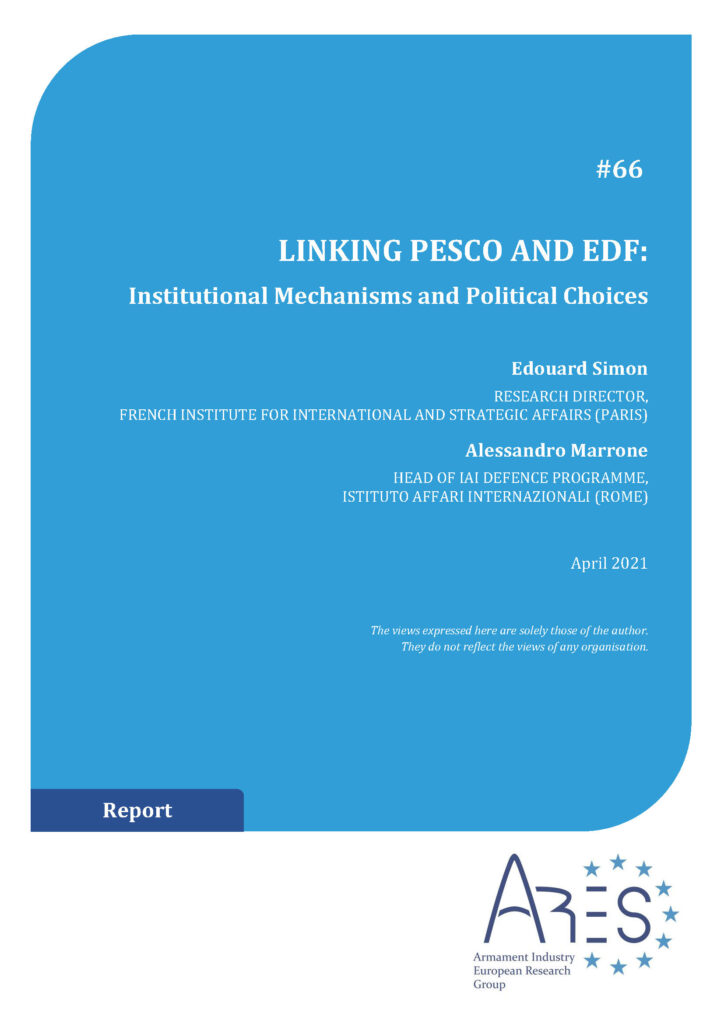Notes / Ares
3 May 2021
Linking PESCO and EDF: Mechanisms and Political Choices

This new ARES report proposes an in-depth analysis of the potential linkages between two of the new EU initiatives in the field of defence capabilities development, namely the Permanent Structured Cooperation (PESCO) and the European Defence Fund (EDF). It discusses the rationale of such a linkage and offers a review of the main options on the table.
In a first part, the report questions the conditions under which such a linkage could take place. Whereas there is an unquestionable commonality of several, key objectives (address capabilities shortfalls at European level, enhance EU strategic autonomy and strengthen the European Defence Technological and Industrial Basis (EDTIB)), the case for their linkage is not that obvious for at least two reasons.
First, PESCO and EDF pertain to two different legal and institutional frameworks: CSDP and intergovernmentalism for PESCO, EU industrial policy and EU Community Method for EDF. So, the linkage between PESCO and EDF cannot be of legal nature. Similarly, the institutional features of both initiatives (their distinct scope of application, for instance) must be respected in any linkage scenario.
Second, they pursue different specific objectives. EDF, in particular, is expected to serve objectives such as the widening of cross-border cooperation of defence SMEs and mid-caps, while PESCO is not.
Building on this analysis, the report supports the idea that a PESCO-EDF linkage shall be envisioned in both ways. EDF may intervene as a support to PESCO cooperation – it is the raison d’être of the PESCO bonus – but it can certainly also trigger some PESCO projects…




